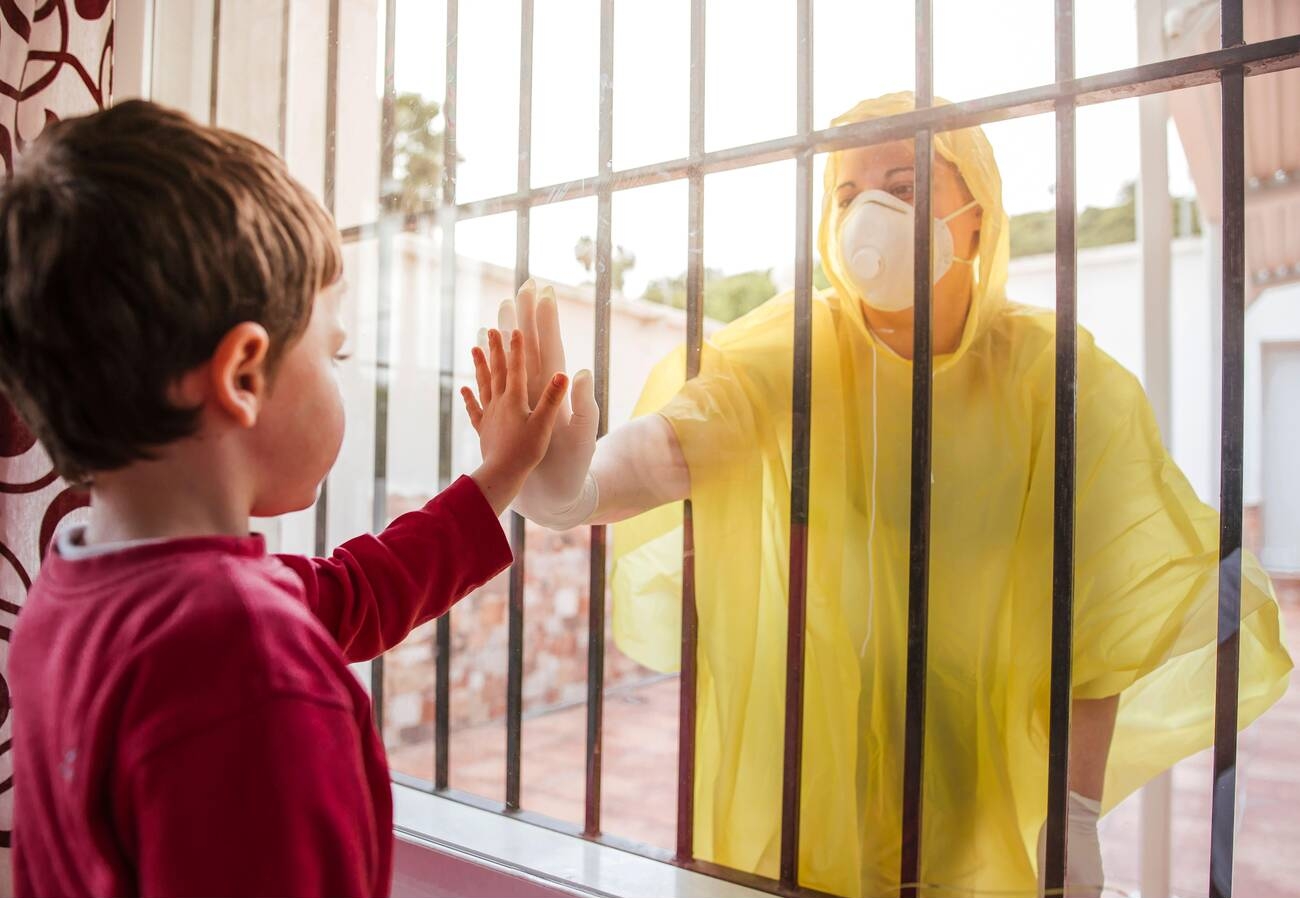As unfortunate as it may sound, symptoms of anxiety disorder often go unnoticed in most cases. Suppose you watch your co-worker excessively worrying over the routine meeting, panicking when asked to present in front of others or found nibbling on their nails. In this case, the signs clearly indicate their anxious behavior.
However, it becomes a matter of concern if the anxiousness goes to the point of abnormality, interfering with a person’s routine functioning. However, if diagnosed early, anxiety disorders are treatable and help an individual lead a healthy life.
What is Anxiety Disorder?
Anxiety is an emotion that is triggered due to any external or internal factor suggesting potential tension or danger. The normal reaction to stressful situations or potential danger is obvious, but a consistent fear or anxiousness during the day suggests an anxiety disorder of sort. There are various types of anxiety disorder in adults which they may experience with or without any other comorbid disorders.
Signs of Anxiety Disorder in Adults
Anxiety manifests in many forms. One of the common signs of anxiety in adults is worrying about every little thing in life and having no control over intense emotions triggered by an external or internal stimulus. These emotions are mostly displayed as follows;
Psychological Symptoms:
- Insomnia or other sleep problems
- Feeling of panic when caught up in a dangerous situation
- Inability to concentrate on routine tasks
- No control over emotions or thinking
- Major depressive episodes due to excessive worry
- Crying spells due to uncontrollable circumstances
Physical symptoms:
- Excessive sweating when losing control of the situation
- Heart palpitations and high blood pressure
- Tense muscles, dizziness or dry mouth
- Shakiness, inability to stay calm
- Persistent gastrointestinal problems
- Breathing difficulty when around people
Anxiety Disorders in Adults
Most individuals experience episodes of anxiety that spiral out of control and disrupt their daily functioning to a huge extent. As a result, you may sometimes find them avoiding situations, people or places that trigger their fear or worry. However, these signs of anxiety in adults could have also manifested in early childhood and have continued through their adulthood if they had not been treated at an early age.
What Causes Anxiety Disorders?
Several stressful life events may contribute to anxiety conditions. Common factors are:
- Work stress or job change
- Change in living circumstances
- Pregnancy or giving birth
- Problems relating to family and relationships
- Major emotional trauma from a traumatic or stressful event
- Verbal, physical, sexual, trauma or emotional abuse
- Death or losing a loved one
Types of Anxiety Disorder
Anxiety disorder in adults includes social anxiety disorder, generalized anxiety disorder, obsessive-compulsive disorder, separation anxiety disorders or specific phobias.
Let’s discuss the most common anxiety disorders in adults.
Generalized Anxiety Disorder
Adults with generalized anxiety disorder experience excessive unrealistic and persistent worry that is triggered due to a specific object or even in the absence of a stimulus. One may face persistent worry about their work, official meetings, family responsibilities, studies, personal safety, romantic relationships, family expectations or overall performance in life. Adults with GAD face difficulty overcoming their fears and shutting off their minds from overthinking and indulging in negative self-talk.
Signs of GAD
An adult is diagnosed with GAD if they experience anxiety every day for at least six months. It is the most prevalent type of anxiety disorder in adults with symptoms of restlessness, losing control over things, overthinking, self-doubt, self-consciousness, difficulty concentrating on tasks, fatigue, muscle tension or trouble sleeping. Generally, the condition is found more common in females than in males. It begins slowly and usually manifests in childhood or middle age.
Obsessive-Compulsive Disorder
An adult with OCD has obsessive thoughts and compulsive behaviors to release the tension brought about by their unwanted thoughts. For instance, people have recurring thoughts about cleaning their hands after touching an object. The thoughts continue and do not free the person until they wash their hands repeatedly. In other words, this becomes a part of their routine, and it is hard to get out of the cycle of OCD. However, the repetitive acts give a sense of gratification, relieving anxiety but that too for a short period of time.
Signs of OCD
There are certain signs of OCD that tell the adults apart from the group. Like, for instance, you would find these individuals counting multiple times, checking locks repeatedly, and obsessing over cleanliness or symmetry around them. The more an individual acts on their obsessive thoughts, the more compelled they feel to perform them again.
Panic Disorder
Panic disorder accompanies sudden, brief feelings of fear and strong physical reactions in response to ordinary, nonthreatening situations. When you’re having a panic attack, you may sweat a lot, have difficulty breathing and feel like your heart is racing. It may feel as if you’re having a heart attack. Panic disorder can develop when you worry too much about having another panic attack or change behaviors to avoid having a panic attack.
Signs of Panic Disorder
A panic attack is determined by specific physical and psychological symptoms manifested in adults, such as:
- Increased heart rate and palpitations
- Sweating and shortness of breath
- Hot flashes or chills
- Chest or abdominal pain
- Nausea or chocking
- Fear of uncontrollable situation
- Fear of heart attack
- Feeling helpless and hopeless
- Fear of death
Social Anxiety
A person with social anxiety disorder feels symptoms of anxiety or fear in situations where they may be scrutinized, evaluated, or judged by others, such as speaking in public, meeting new people, dating, being on a job interview, answering a question in class, having to talk to a cashier in a store, eating or drinking in front of others, using a public restroom, giving a performance such as giving a speech, competing in a sports game, or playing a musical instrument on stage. For some people, this fear may get in the way of going to work, attending school, or doing everyday things. Sometimes, they end up avoiding places or events that cause distress or generate feelings of embarrassment. Social anxiety disorder usually starts during late childhood and may resemble extreme shyness or avoidance of situations or social interactions. It occurs more frequently in females than in males, and this gender difference is more pronounced in adolescents and young adults.
Signs of Social Anxiety
When having to perform in front of or be around others, people with social anxiety disorder may:
- Blush, sweat, or tremble
- Have a rapid heart rate
- Feel their “mind going blank,” or feel sick to their stomach
- Have a rigid body posture or speak with an overly soft voice
- Find it difficult to make eye contact, be around people they don’t know, or talk to people in social situations, even when they want to
- Feel self-consciousness or fear that people will judge them negatively
- Avoid places where there are other people
Treatment
In the past two decades, a great deal of progress has been made in treating people with mental illnesses, especially adults who experience anxiety. Although the individualized treatment approaches are effective for a particular type of anxiety disorder in adults, it is possible to treat common anxiety disorders with one or a combination of these therapies.
- Medication: Certain type of drugs are used to reduce symptoms of anxiety in adults which may include antidepressants, such as selective serotonin reuptake inhibitors (SSRIs) and serotonin-norepinephrine reuptake inhibitors (SNRIs), beta-blockers or anti-anxiety medications, such as benzodiazepines. They may be helpful to control some of the physical symptoms of anxiety such as rapid heart rate, sweating, and tremors.
- Psychotherapy: Cognitive behavioral therapy (CBT), a research-supported type of psychotherapy, is commonly used to treat anxiety disorders. CBT teaches you different ways of thinking, behaving, and reacting to situations to help you feel less anxious and fearful. Exposure therapy is a CBT method that focuses on progressively confronting the fears underlying an anxiety disorder to help you engage in activities you have been avoiding. Exposure therapy is sometimes used along with relaxation exercises. Acceptance and commitment therapy (ACT) uses strategies such as mindfulness and goal setting to reduce your discomfort and anxiety.
- Dietary and lifestyle changes: Proper nutrition, regular exercise, and the ability to relax can play a role in your effort to cope with panic and anxiety.
- Relaxation therapy: Deep breathing exercises and certain imagery techniques help alleviate the symptoms of anxiety.
Final Thoughts
In all, living with an anxiety disorder, or any other mental health illness, can be quite tough. Therefore, it’s imperative to never ignore the symptoms and seek consultation from an experience.
Visit Camali Clinic or seek online counseling from our senior adult psychiatrist in Dubai. Our dedicated team of psychologists would help you function better through the day and overcome anxious behaviors.





